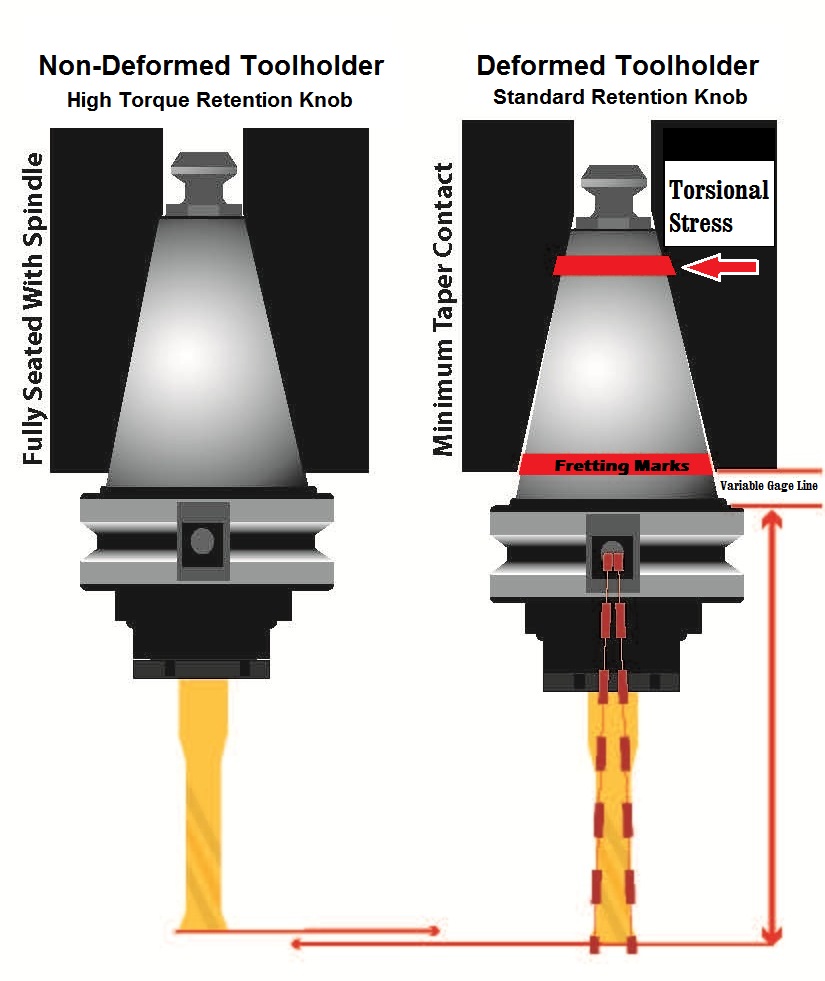What's the Big Deal About a Deformed Toolholder?
When a standard retention knob is installed in a toolholder, the threads place a torsional stress onto the thin walls of the toolholder. This stress causes the deformation of the precision taper of the toolholder and prevents the toolholder from properly mating with the spindle of a CNC machine. This expansion can reduce taper contact by as much as 70% and, therefore, no longer meets the AT3 taper tolerance specifications. An expanded toolholder leads to poor tool-life, harmonics, run-out, poor finishes and shortened spindle life. Through studies, we have found that when a toolholder is properly mated with the spindle, carbide tool-life can be increased by 10% to 300%.

The image above shows how a High Torque retention knob prevents the toolholder from expanding. The HT knob is longer than a traditional retention knob, but shares the same head dimensions. The additional length increases durability of the High Torque retention knob; a standard retention knob has less shank elasticity and will fatigue faster. The extra length of the knob is added to the shank of the knob below the flange. This relief, along with a precision pilot and controlled threads, allows for the stress to be distributed into a deeper cross-section of the toolholder where it has more resistance, thus preventing the toolholder from expanding.
Please see our High Torque Retention Knob page for more information.
